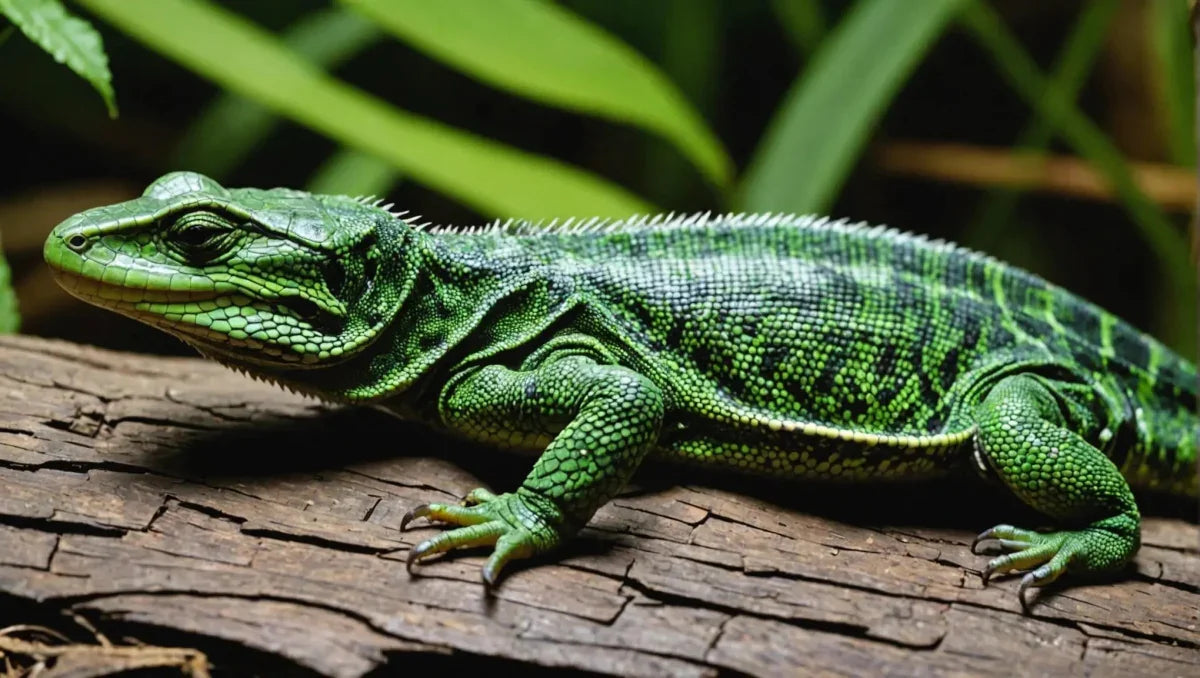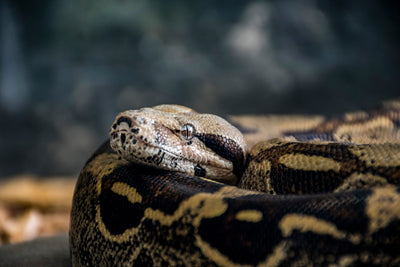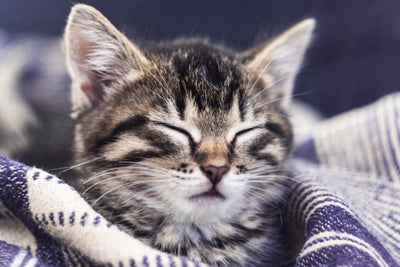Creating the Perfect Habitat Temperature for Reptiles

Creating the perfect habitat temperature for reptiles is crucial for their health and well-being. In this guide, we will explore the top 5 heat sources that can help you achieve optimal temperatures in your reptile enclosure. From heat lamps to heating pads, understanding the best options available will ensure that your reptile thrives in its environment. Join us as we delve into the world of reptile heating solutions and discover the most effective ways to maintain the ideal temperature for your scaly companions.
Natural Heat Sources
Reptiles in the Wild: How They Regulate Body Temperature
In the wild, reptiles have fascinating ways of regulating their body temperature. From basking in the sun to seeking out warm rocks, these cold-blooded creatures have adapted to rely on natural heat sources to maintain their internal warmth. By exploring the various methods reptiles use to regulate their body temperature, we gain insight into the intricate relationship between these animals and their environment.
The Role of Sunlight: A Vital Source of Heat
Sunlight plays a crucial role in providing heat for reptiles. As ectothermic animals, reptiles depend on external sources of warmth to raise their body temperature. Basking in the sun allows reptiles to absorb heat, which in turn helps them with essential bodily functions such as digestion, metabolism, and overall activity levels. Without access to sunlight, many reptiles would struggle to maintain their optimal body temperature, impacting their health and survival.
Rocks: Nature's Radiant Heaters
Apart from sunlight, rocks also serve as important heat sources for reptiles. Rocks have the ability to absorb and retain heat, making them ideal spots for reptiles to rest and warm up. Whether it's a rocky outcrop or a pile of sun-warmed stones, reptiles often seek out these heat-conducting surfaces to regulate their body temperature. By understanding how rocks contribute to the thermal balance of reptiles, we appreciate the significance of these natural formations in the lives of cold-blooded creatures.
Additional Insights into Natural Heat Sources
-
Thermal Gradients: Reptiles utilize thermal gradients in their environment to regulate their body temperature effectively. By moving between warmer and cooler areas, they can adjust their internal heat levels as needed.
-
Behavioral Adaptations: Some reptiles exhibit specific behaviors to maximize heat absorption. For example, certain species may engage in communal basking to collectively benefit from the warmth of the sun.
-
Underground Heating: In addition to rocks and sunlight, some reptiles, like burrowing species, rely on underground sources of heat. The soil's thermal properties play a crucial role in maintaining these reptiles' body temperatures.
-
Seasonal Variations: The availability of natural heat sources fluctuates with the seasons, influencing reptiles' behavior and habitat selection. Understanding how reptiles adapt to these changes sheds light on their resilience and survival strategies.
By delving deeper into the world of natural heat sources for reptiles, we uncover the intricate mechanisms that govern these animals' thermoregulation and underscore the importance of preserving their habitats for continued well-being and biodiversity.
Artificial Heat Sources
Artificial heat sources are essential for creating a suitable habitat for reptiles, ensuring they can thrive in captivity. Let's explore the top 5 artificial heat sources commonly used for reptiles and delve into the benefits and considerations of each:.
- Heat Lamps:
- Benefits: Heat lamps provide a focused heat source, mimicking natural sunlight which is essential for reptile metabolism. They are versatile and can be used to create basking spots within the enclosure.
-
Considerations: Regular replacement of bulbs is necessary to maintain optimal heat output. Positioning is crucial to prevent burns, especially for arboreal species.
-
Heat Pads:.
- Benefits: Heat pads offer localized heat, ideal for providing belly heat for reptiles that require it for digestion and thermoregulation. They are particularly useful for reptiles that prefer ground heat.
-
Considerations: Monitoring for overheating is important to prevent burns or discomfort. Heat pads may not be suitable for all enclosure types, especially those with substrate that retains heat.
-
Ceramic Heat Emitters:.
- Benefits: Ceramic heat emitters emit infrared heat without producing light, making them ideal for providing warmth without disturbing the reptile's day-night cycle. They are long-lasting and durable.
-
Considerations: A ceramic fixture is required for safety. While they can be expensive initially, their longevity and efficiency make them a cost-effective option in the long run.
-
Under-Tank Heaters:.
- Benefits: Under-tank heaters provide heat from below, simulating the warmth reptiles would experience from the ground in their natural habitat. They are ideal for nocturnal species that require gentle heat during the night.
-
Considerations: Proper placement is crucial to avoid direct contact with the heat source, which can cause burns. They may not be sufficient as the sole heat source in larger enclosures.
-
Radiant Heat Panels:.
- Benefits: Radiant heat panels offer gentle, widespread heat coverage, making them suitable for larger enclosures. They are energy-efficient and provide a natural heat gradient.
- Considerations: Installation may require professional assistance, especially for larger panels. While the initial cost is higher than some other options, the efficiency and coverage they provide make them a valuable investment.
Choosing the right artificial heat source for your reptile depends on various factors such as the species' natural habitat, enclosure size, and specific heating requirements. By understanding the benefits and considerations of each type, you can create a comfortable and safe environment for your scaly friends to thrive and stay healthy.
Temperature Regulation for Reptile Pets
When it comes to ensuring the well-being of your reptile pets, proper temperature regulation is key. By utilizing reliable heat sources such as the Jump Start Thermostat or the Inkbird 110V Heat Mat Temperature Controller & Day and Night Thermostat, reptile owners can create a comfortable and safe environment for their cold-blooded companions. However, simply having the right equipment is not enough; correct placement of the thermostat sensor within the enclosure is crucial. It should be positioned away from direct heat sources and at a height where the reptile typically resides to obtain accurate temperature readings. This ensures that the reptile's habitat maintains a stable temperature gradient, which is vital for their overall health and well-being. Achieving the ideal temperature range is essential for reptiles as they rely on external heat sources to regulate their body temperature and metabolism. Let's delve deeper into some temperature regulation tips for reptile owners to ensure the optimal well-being of their scaly friends.
Creating a Thermal Gradient
One of the fundamental aspects of temperature regulation for reptiles is creating a thermal gradient within their enclosure. This gradient allows the reptile to move between warmer and cooler areas based on their needs, mimicking their natural behavior in the wild. The basking spot, where the heat source is located, should provide the highest temperature in the enclosure, while the opposite end should offer a cooler retreat for the reptile to regulate its body temperature effectively.
Monitoring Temperature Levels
In addition to using reliable heat sources and positioning the thermostat sensor correctly, monitoring the temperature within the enclosure is crucial. Regularly check the temperature levels using a reliable thermometer to ensure that the gradient remains stable. Make adjustments as needed to accommodate seasonal changes or fluctuations in ambient temperature.
Species-Specific Requirements
Furthermore, consider the specific temperature requirements of the reptile species you are caring for. Different reptiles have varying temperature preferences based on their natural habitat. Research the ideal temperature range for your pet reptile and adjust the heating equipment accordingly to meet their specific needs.
Humidity Levels
Remember that maintaining proper humidity levels is also essential for the overall well-being of reptiles. Some reptile species require higher humidity levels to thrive, so ensure that the enclosure's humidity is within the appropriate range to prevent dehydration and respiratory issues.
By following these temperature regulation tips and providing a comfortable and thermally stable environment for your reptile pets, you can promote their health, activity, and overall quality of life.
Conclusion
Selecting the right heat source is crucial for maintaining the optimal habitat temperature for reptiles. By considering factors such as the size of the enclosure, the specific needs of the reptile species, and safety features, reptile owners can create a comfortable and safe environment for their scaly companions. Whether choosing heat lamps, heat pads, ceramic heat emitters, radiant heat panels, or under-tank heaters, ensuring that the temperature gradient within the enclosure mimics the reptile's natural habitat is essential for their overall health and well-being. By providing the right heat source, reptile owners can help their pets thrive in captivity.






